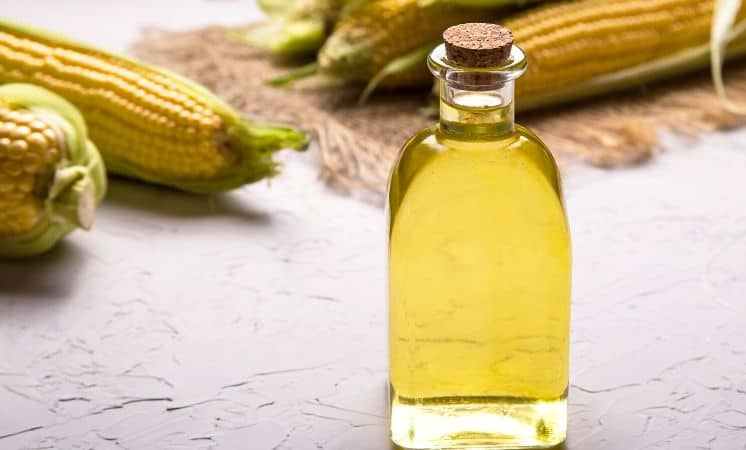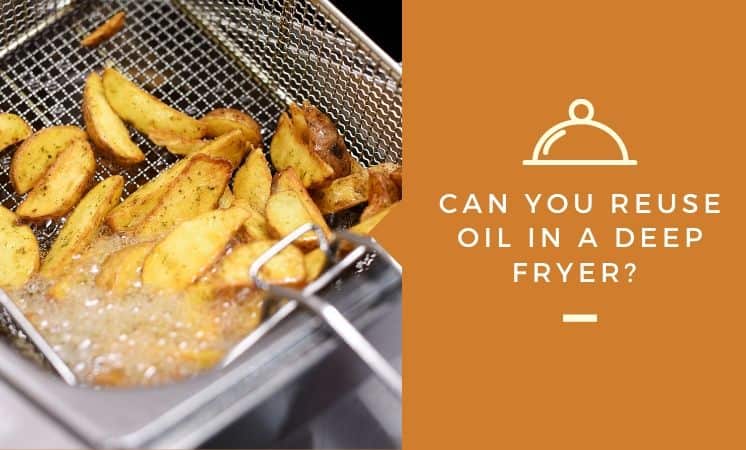Frying food is the American way of life. It is the preferred method of preparing most food from french fries, fried chicken, and to the extreme of deep-fried ice-cream to wake up the palate. However, with all this fried food, it requires to cook with oil.
This can be expensive and time-consuming when preparing a meal that calls for fried food. Most prefer to order fried food rather than prepare it. Everyone is busy with work schedules, family obligations, and of course, we all are watching our budget; it is fair to ask:
Can You Reuse Oil In A Deep Fryer? Yes, you can reuse the oil for frying similar foods; however, it would be advised to change the oil if you went from deep-frying shrimp to frying up desserts like funnel cakes. The type of oil, cooking temperature, and filtering the oil between cooking batches will play a big part in whether to reuse or toss for your cooking extravaganza.
Frying food is a delicate balance between the type of oil used and the cooking temperature. If not done properly, especially with extra care, can turn your well thought out dish to a cooking nightmare. ‘
Frying food is an excellent method for preparing your food when you do it properly. You don’t have to be a Michelin star chef to enjoy the benefits of this cooking method.
What Is The Proper Way to Reuse Frying Oil in A Deep Fryer?
Frying at the correct temperature is one of the key components maintaining the integrity of the oil for reuse. Most mistakes happen when the temperature is too high or too low.
If you cook with the oil too cold, the cool oil will be unable to thoroughly cook changing the consistency and turning your food doughy. Doughy fried chicken is not a pleasing texture to the tongue.
Cooking too hot will burn the outside leaving inside raw. A thermometer will be a great assistant in maintaining the proper temperature. It all comes down to the cooking temperature when frying.
Second is the type of oil. Peanut oil is the most popular for frying food. Peanut oil is mainly used for high heat cooking. Any oil that is designed for high heat cooking will prevent the oil from breaking down.
Canola is considered for frying if you prefer your dish not to have the nutty flavor. Any oil that is derived from the nut family will produce this flavoring.
Third and probably most important is filtering your fat and any impurities after EACH use. There may be crumbs leftover from the batch. Failing to filter your oil will cause you to burn your food.
The leftover crumbs will burn, thus effecting the cooking procedure to your new batch of food. Filtering also helps in maintaining the quality of the oil.
Do not skip this step as it will save you a lot of time and heartache in your cooking process.
Lastly is the amount of times you reuse the oil concerning your dish. Peanut oil can be reused up to 4 times when it comes to frying chicken but be cautious as chicken produces a strong flavor and may affect the taste if you reused the oil for something else.
Frying potatoes for chips can be reused up to 8 times. Oil is always compromised when reused. The more it is reused, it becomes more and more unstable and the quality slowly demises.
How Many Times Can I Reuse the Oil With Certain Foods?
As you set out on your cooking adventure, it is best to know just how many times you can reuse a particular oil in conjunction with your dish. Below is a table of popular foods that will break it down respectfully in the type of food, oil, and reusable times.
| Food | Oil | Times of Reuse |
| Chicken/Beef | Canola | 3-4 |
| Shrimp/Seafood | Fish/Grape Seed | 7 |
| Chips/French Fries | Corn | 8 |
| Donuts/Pastries | Peanut | 3-4 |
| Cheese | Vegetable | 3-4 |
| Bread | Vegetable | 3-4 |
| Processed Desserts (Twinkie, Oreo, etc) | Canola, Sunflower, Peanut | 3-4 |
As you can see, the average is 3-4 times; you can reuse an oil, and vegetable oil is a diversified choice for frying dishes.
Each type of oil has its components with their proper temperatures and cooking times. By following these guidelines, you will create a delicious dish for everyone to enjoy, even if your guests are concerned with their diet.
There are healthier options in oils when frying foods. Fried food doesn’t have to be the enemy of anyone’s diet. With proper preparation and ingredients, everyone can enjoy this favorite method of cooking.
What are Healthier Oil Options For Frying?

Coconut is by far the healthiest oil you can use when preparing any dish. It will help trim the waistline, fight inflammation, and improve brain activity. The benefits of coconut oil will have anyone reconsidering fried foods as unhealthy.
Be cautious of coconut oil as it can leave a coconut or nutty flavor. Other healthy oils may be a better choice when it comes to flavoring. Animal fats, lard, ghee, and tallow provides a healthy choice without the extra nutty flavoring.
If you do choose an animal fat to be mindful of the animal’s diet. This will determine the healthy component. For instance, if the animal was grass-fed or had an organic diet, then this fat will be the healthier option as opposed to a diet of processed food.
Healthy animal fat is a fantastic choice as it will bring the full flavor without any additional nutty aftertaste.
Frying food and using a deep fryer can be overwhelming. Yet, it doesn’t have to be so especially when you are choosing your oil, always remember to choose oils high in saturated and monounsaturated fats.
Avoid oils containing polyunsaturated fat. Secondly, be mindful of the temperature for each oil. Lastly, properly store your oil. It oxidizes quickly, producing harmful radicals in which a rancid odor will occur if not stored properly.
If you remember these few things, then you are well on your way to frying successfully and healthy. Frying is a delicate art, but no one should be intimidated by it if you prepare and take precautions.
How Do I Filter My Cooking Oil For Reuse?
Using a coffee filter or cheesecloth is a simple method when filtering cooking oil. The filter or cloth will collect any crumbs or leftover pieces.
This will “clean the oil” and the integrity to allow you to reuse multiple times. In most instances, you can reuse oil up to 8 times. This saves time and money.
What Are Healthy Oil Alternatives For Frying?
If you love fried food but want healthier options, then you are in luck. Coconut, olive, avocado, macadamia, lard (pig fat), tallow (beef fat), and ghee* provide healthy alternatives. Plus, each oil provides its unique punch of flavor.
*research cooking methods as these oils have fragile temperatures and processes.
Air Fryers Are Healthier Overall
Compared to a deep fryer, an air fryer doesn’t require oil to create a crispy surface, instead, it relies on the convection mechanism and a chemical reaction called the Maillard effect.
The crisp created by the air fryer isn’t exactly similar to the texture of deep-fried foods but the up-side is that the air fryer can cut fat content up to 80% – which makes anything cooked in the air fryer much less calorie-dense than its deep-fried counterparts.
But even with the air fryer, a thin layer of oil makes the ingredients much crispier as they come out of the fryer.
We got our first air fryer a couple of years ago and up until it stopped working it was used as frequently as 4-5 times a week. It’s a nice alternative and it’s very simple to use.
We fell in love with the Cosori 5.8 air fryer, here’s a link to it on Amazon.
What Is The Difference With Pan Frying From Deep Fryer?
Pan-frying requires different temperatures and the amount of oil that is used as opposed to a deep fryer. Pan-frying is far more dangerous, mainly because of oil splatter.
The space required for frying food is not meant in a small area. A pan can only expand so far in depth and height.
A deep fryer opens many cooking options. Some dishes/foods require a deep submersion, and the deep fryer is much easier to use as opposed to a pan or pot on the stove.

